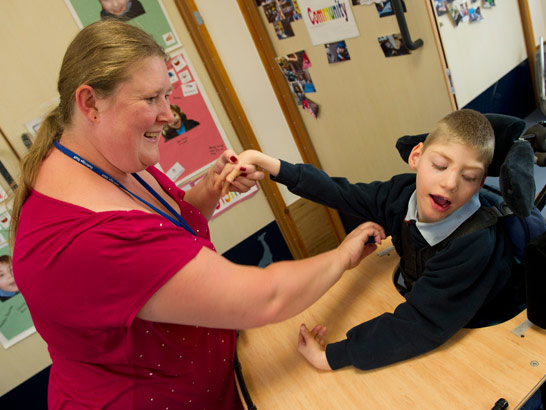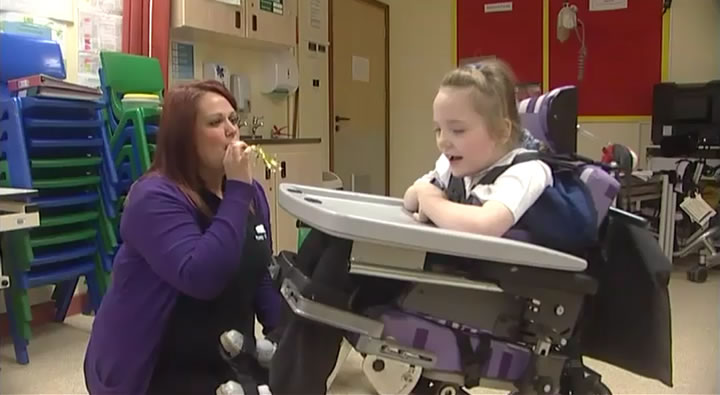The Life Satisfaction Matrix (LSM) is a procedure for assessing the subjective quality of life of individuals with PMLD (Lyon 2005).
The LSM makes a two assumptions:
- that quality of life for children with PMLD is improved when they can spend more time on preferred activities and less time on non-preferred activities, and
- that a child's preferred and non-preferred activities can be determined by their affective behaviour (their reactions).
Watch this clip in which a headteacher explains how staff learn to recognise how children with PMLD express their likes and dislikes.
The significant adults in the child's life, e.g. teachers, teaching assistants and parents, describe and agree on the behaviour which shows or demonstrates that the child is happy. This might be making eye contact or a murmuring sound. The issue is not what this sign is but that there is agreement between the adults (the proxy respondents) as to how the child shows that they are happy.
Step 1 - One of the significant adults identifies ten activities that the child is involved with during the day. This process requires close observation of the child. The activities are then divided into preferred activities, neutral and non-preferred activities and the activities are ranked.
Step 2 - A second adult repeats step 1 separately - identifying and ranking the activities.
Step 3 - There is discussion between the significant adults to decide on the child's top five preferred activities. Step 4 - Once the preferred activities have been identified it is then possible to consider how you can improve the child's quality of life by increasing the amount of time that the child is engaged with these activities and how these activities can be extended, e.g. through techniques such as intensive interaction. (see the module Communication and Interaction).
The next activity gives you the chance to try this for yourself with a child with PMLD in your class/school.
1. As each person who knows the child well to tell you the behaviours that best describes/indicates when the child is happy. Record them in the second column of the table. In the final row, write down those behaviours upon which there is general agreement.
| Adult | Behaviour |
| Class teacher | |
| Classroom assistant | |
| Parent/Carer | |
| An Other | |
| An Other | |
| Agreed behaviour which shows s/he is happy |
Now observe the child over a typical day. For ten activities note, use the 'happiness' indicators you have agreed, to note in the second column, here and on the next page, which activities the child seemed to prefer, was neutral about or seemed to dislike.
| Ranking | Activities | |
| Preferred activities |
1st | |
| 2nd | ||
| 3rd | ||
| 4th | ||
| 5th | ||
| Neutral activities |
6th |
| Ranking | Activities | |
| 7th | ||
| 8th | ||
| 9th | ||
| Disliked activities |
10th |
4. Repeat steps two and three with other proxy respondents who know the child well. Do you all agree on what the child seems to like and dislike?
5. How can you increase the amount of time that the child is engaged with the preferred activities?
6. How can you extend these activities?

Lyons, G. (2005) The Life Satisfaction Matrix: an instrument and procedure for assessing
the subjective quality of life of individuals with profound and multiple
disabilities. Journal of
Intellectual Disability Research, 49.10 p 766-769.
